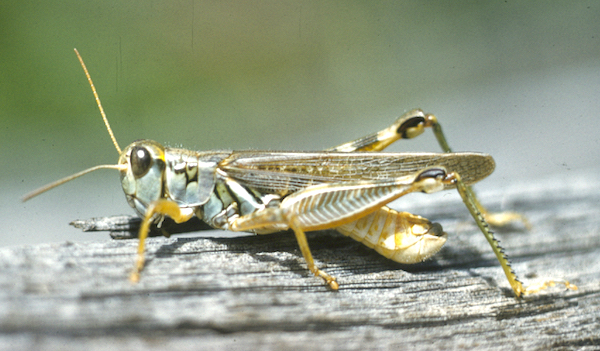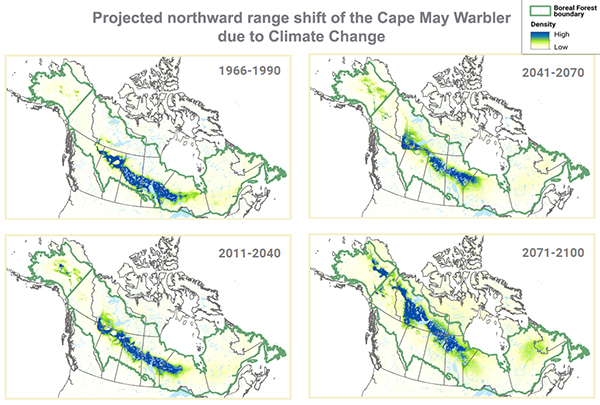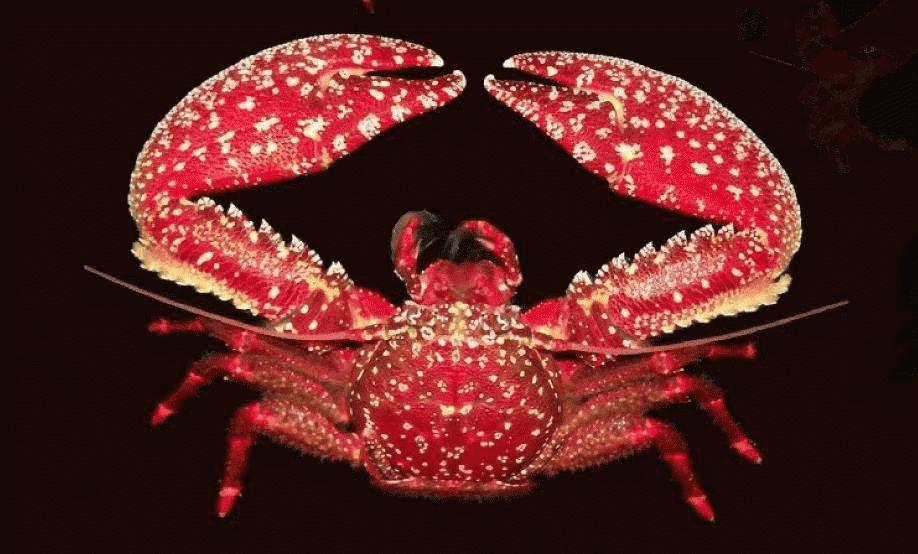Physiology

Temperature and Physiology: All Curves, All The Time
How does climate affect life on earth? Human beings are pretty special in this regard—we—have developed technologies like air-conditioning and heating to change our environments, we can choose clothing to suit the weather, and many of us can easily travel long distances. Most species aren’t like us, so the environmental conditions where they live have much more of an impact on their activities and function. The specific details of this impact (which conditions are the most important, and what effect they have) depend on that particular organism’s physiology.
One of the most important ideas to understand about how climate affects living things, especially when it comes to ectotherms – organisms whose body temperature is dependent on external heat sources rather than internal physiology–, is that responses are non-linear—meaning that when we graph them, we don’t see a straight line. This is illustrated in the figures below, all of which show body temperature on the x-axis and relative fitness on the y-axis. (More on fitness in the Gradients section, but the basic idea is that high fitness means more offspring, which is good!)

Each curve shows how a hypothetical ectotherm’s fitness changes with its body temperature. Note that since measuring fitness directly requires waiting for an individual to reproduce, we often create curves like these by approximating fitness with some other measure of performance, like locomotion. Part a) shows that above or below a critical minimum and maximum temperature (CTmin and CTmax), the animal has zero fitness—in other words, if it’s too cold or too hot, it can’t move (or presumably reproduce) at all. Its tolerance range is everything in between. Its performance breadth is the range of temperatures at which it has relatively high fitness, and To is its optimal body temperature—the temperature at which it has maximum possible fitness. Part b) helps to demonstrate why it matters so much that this is a curve. Look at the arrow that shows climate warming. If an individual is currently at point A, a few degrees of warming will increase its fitness. But for an individual currently at point B, any warming will be detrimental—it will tip it over the peak of the curve and lower fitness. Parts c) and d) show why climate change may have a bigger impact on “thermal specialists” (organisms with a narrow range of temperature tolerance) than “thermal generalists”; the same amount of change in body temperature results in much bigger changes in fitness in figure c) than figure d).
One of the most useful measures of performance is metabolism (the chemical reactions that sustain life and provide energy), and plotting metabolism against temperature can help us understand why organisms often respond to climate change in non-linear ways. This is because metabolism and temperature have an exponential relationship: metabolism increases more and more rapidly as temperatures increase. As a result, a smaller change in temperature in the tropics, where it’s already hot, can have larger impacts on metabolics. This relationship can also produce counterintuitive responses to climate change. For instance, warmer winters can be detrimental to overwintering insects because if their metabolism rates ramp up when they should be in diapause, they quickly deplete their energy resources.
Move, Acclimate, Adapt, or Die
In the face of climate change, there are four basic ways living things can respond. First, if conditions where an organism lives are no longer suitable, it might move to where the climate is more favorable—a phenomenon known as a range shift. The figures below, for example, illustrate bird species whose distribution ranges are shifting uphill into cooler mountaintops or northward into cooler latitudes. (Species can also “move” in time rather than space, shifting the timing of when certain important life events take place. The grasshopper case study on this website illustrates this kind of phenological shift.)


Second, living things might stay where they are and acclimate, which is when individual organisms become accustomed to new climatic conditions. For example, the American pika (Ochotona princeps), a tiny alpine mammal, normally lives exclusively in exposed boulder fields—but as winters in its habitat have warmed, it has changed its behavior. It now seems to be spending more time in coniferous forests and under downed logs—places where it can escape high temperatures. Other animals have the capacity to become more physiologically tolerant of high temperatures after spending some time experiencing them, such as Deronectes diving beetles.
Acclimation is a short-term response to environmental changes that is limited to an individual’s lifetime, while adaptation is a longer-term response that involves changes to the genetic makeup of a population. There may be a tradeoff between non-genetic acclimation (also known as plasticity) and genetic adaptation. In the Pacific Ocean there are many species of porcelain crab (in the genus Petrolisthes) that live in different temperature zones, from cold to hot. Unfortunately, the species that have evolved to be the most tolerant to extremely high temperatures also show the least ability to acclimate, and are the most vulnerable to even small changes in temperature.

Another example of adaptation was discovered after an extreme drought that lasted for years in Southern California—likely linked with climate change. Researchers found that in mustard plants evolved to produce seeds earlier in the season so that they now finish their reproductive cycles before the rainy season ends. This is a great example of how multiple responses to climate change can intersect—this mustard species has adapted in a way that moves the timing of its reproductive events to match a more favorable climate. Similarly, the butterfly case study on this website illustrates morphological (physical or structural) changes that are likely the result of both acclimation and adaptation.
Finally, organisms that fail to respond sufficiently to climate change in other ways may die. Entire species may go extinct either locally (in one location) or globally, or they may experience marked decreases in abundance—the size of a population. The Bramble Cay melomys (Melomys rubicola), a small rodent that lived on only one island in Australia, is likely one casualty of climate change. While we may never know for sure what resulted in this species going extinct, the most probable direct cause is the loss of its habitat, as rising sea levels caused by warming and expanding ocean waters shrank down the available territory on the small island.
What determines these outcomes?
Everything we’ve talked about so far reveals that: 1) “Climate change” is a complex phenomenon, involving many environmental variables shifting in ways that aren’t uniform across space and time, and 2) Individual species can display a multitude of responses to these impacts. This incredible complexity is the central challenge of predicting how climate change will impact life on earth. Ecologists approach this challenge in several ways, but the one that we’ll focus on here is the use of species traits. A trait is any phenotypic characteristic or feature of an organism (e.g. body size, coloration, diet, etc.). Functional traits are the most useful in terms of making climate change predictions—these are simply traits that are relevant to an organism’s interactions with its environment or its ecological role.
In the case studies on this website, you’ll be able to use real data to test hypotheses about how functional traits affect the way different species or populations respond to changes in climate. One trait that’s likely to have a major impact on climate change responses, for example, is dispersal ability: the extent to which individuals (or their genes) are able to move from one location to another. A young brown bear leaving its mother’s side to seek out its own territory is dispersing; so is a dandelion seed blown miles away by the wind. It’s pretty intuitive that climate change is more likely to result in range shifts for species with relatively high dispersal ability than those with low dispersal ability. (Perhaps less intuitive is that high dispersal ability may result in slower adaptation, if it increases gene flow between populations and causes the loss of rare genes that might be beneficial under a new climate regime. For more, see the “Gradients” section.) Another trait that’s likely to affect outcomes is thermal specialization, described above. Species that are thermal generalists can thrive under a wider range of temperatures than thermal specialists, and are therefore more likely to acclimate, while specialists are more vulnerable to the threat of extinction because they’re sensitive to smaller changes in temperature.

Finally, since the data you’ll be exploring all come from montane, or mountain-living, animals, elevational range is an important functional trait. (Elevational differences are also discussed in greater detail in the “Gradients” section.) For instance, since mountain peaks tend to be both narrow and rocky, it’s more difficult for high-elevation populations to move upward to track climate than low-elevation populations. But weather extremes are more common at high elevations, so—surprisingly—these populations may already have the genetic capacity to acclimate to the extreme temperatures climate change is likely to bring.
Environmental vs. organismal drivers
As you work through the case studies, think about how both climate variability (which has to do with the environment) and functional traits (which have to do with organisms) influence species responses to climate change. If you find that a particular population shows a bigger response than others, is it because the climate in its range has changed more? Or is it because one or more of its functional traits make it either more sensitive, or more capable of responding, to climate change? Try to use the available data to tease apart these possibilities.